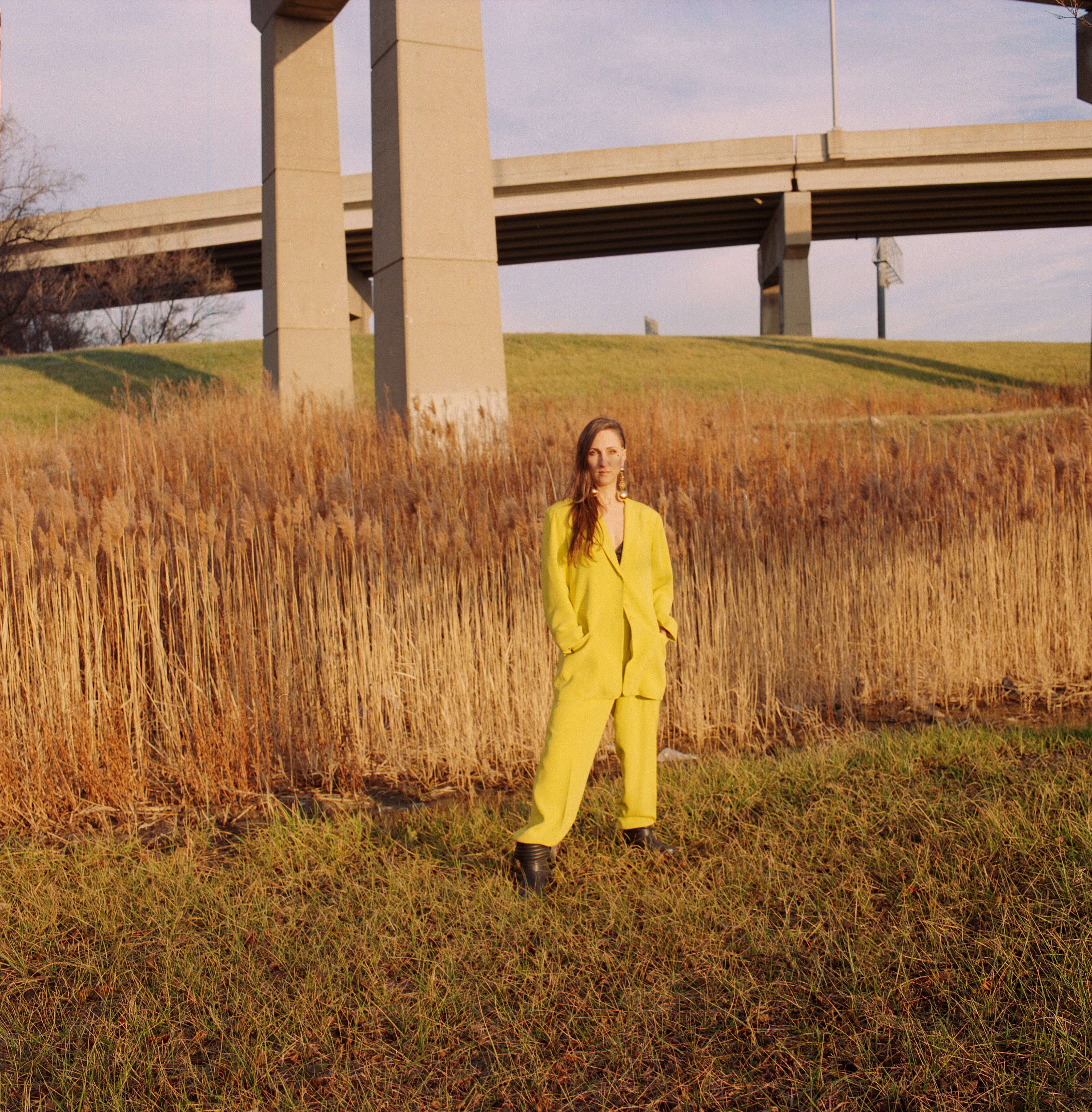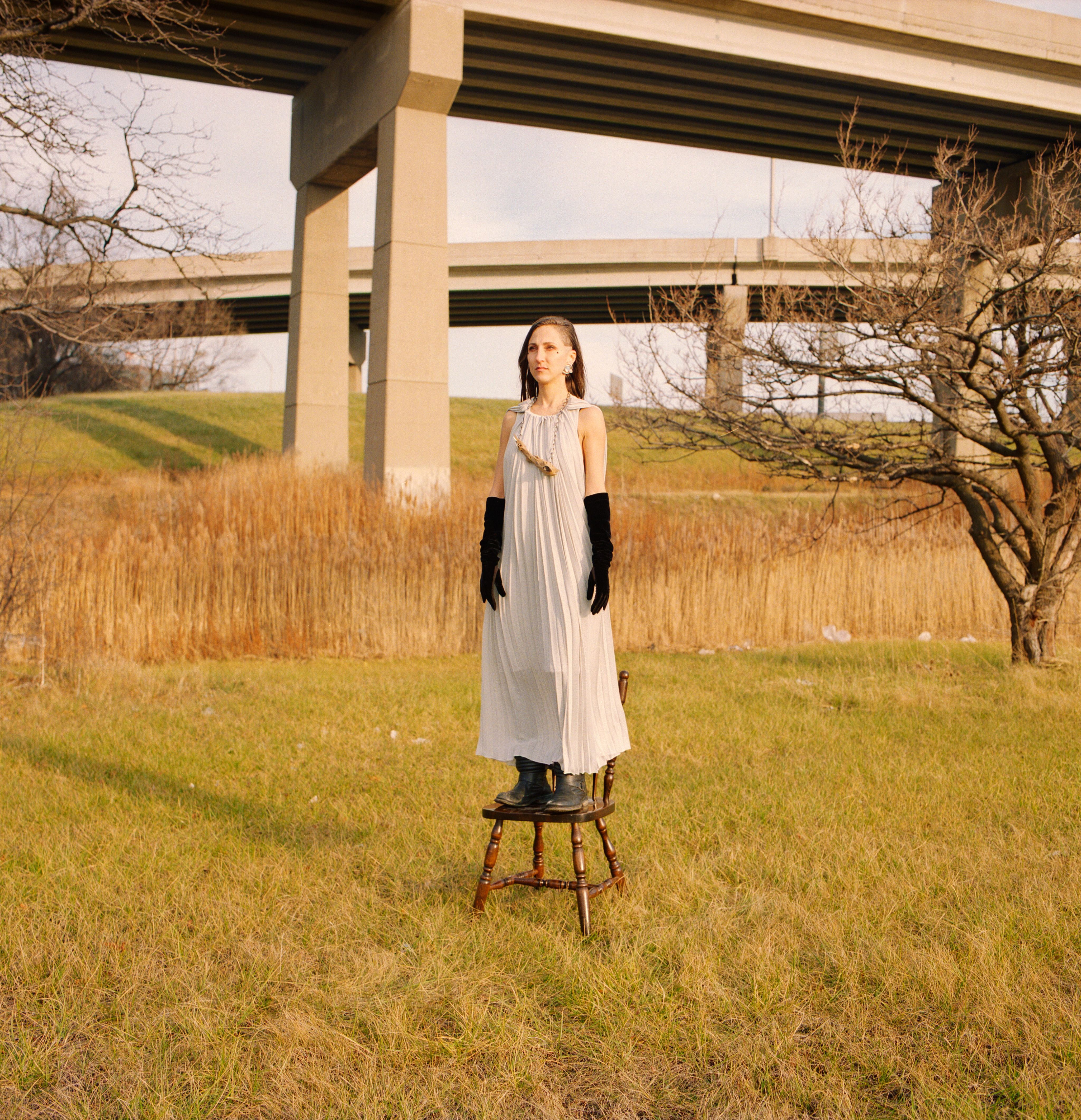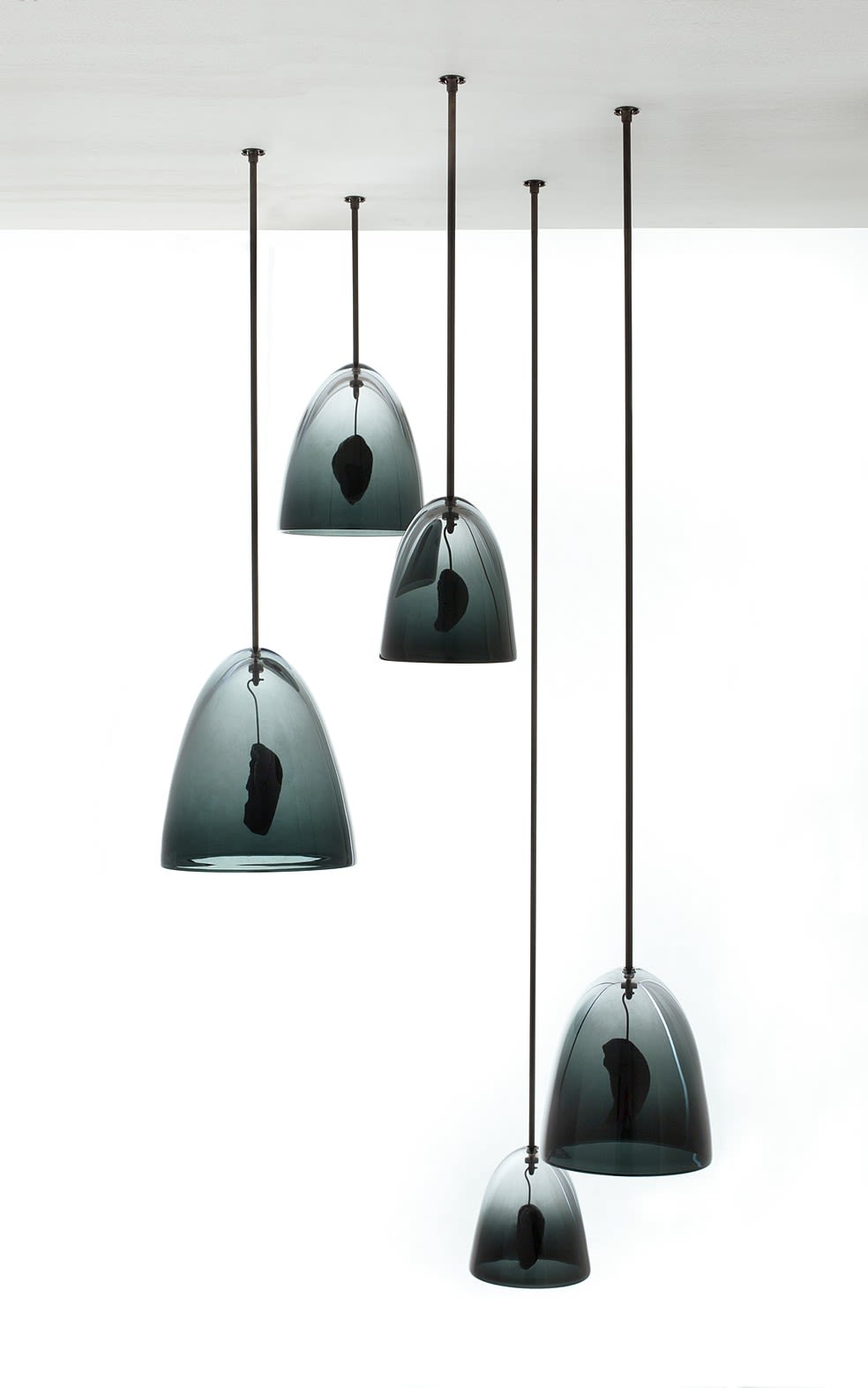Jenny Kendler's Process
How Jenny Kendler’s Environmental Art Practice Is Restoring the World

by Ben Kim Paplham (MFA 2021)
Portraits by Ashley Thompson
Sometimes an idea will capture your attention and percolate for a while. Sometimes for months, sometimes years. As School of the Art Institute of Chicago (SAIC) alum Jenny Kendler (MFA 2006) explained: “After absorbing a lot of new information, your mind needs quiet time to let it filter through and make novel connections.”
Kendler’s self-described “research-based practice” requires patience, curiosity, and a lot of preparation. But as an environmental activist and artist, Kendler’s interdisciplinary approach to restorative practices is one that allows for the complexity of natural and human relationships.
“During the creation of a project, I’m taking all these different threads, which intrigue or interest me, and work to find a way to braid them together—so that they make a unified whole,” said Kendler. “That’s, in some way, how I know the project is conceptually complete, when all those little snippets have been woven in.”
Because so much of the finished product rests in the concept itself, researching and understanding the topic is vital to Kendler’s process. Sometimes this means sending out a plethora of emails to collectors and antique dealers to find the right piano.


“Learning how to be generous to one’s audience is key. Doing the work to provide clarity of thought is part of the work of being an artist, for me. I’m not interested in creating work that’s purposely obscure; I want anyone to be able to approach it.”
In Music for Elephants, a project which opened at the Museum of Contemporary Art Chicago and presently resides in the Smithsonian National Museum of Natural History, Kendler partnered with the Natural Resources Defense Council to find data on African elephant populations. She then extrapolated that data set to create a musical score based on an algorithm where each note represents a month’s worth of elephant poaching (the lower and longer the note is held, the greater number of elephants killed for their ivory). By the time the 10-minute song concludes its finale, only 300 notes or “months” are played (25 years total); we’ve reached the elephant’s extinction.
Kendler’s work is confrontational without being accusatory. She shared that “learning how to be generous to one’s audience is key. Doing the work to provide clarity of thought is part of the work of being an artist, for me. I’m not interested in creating work that’s purposely obscure; I want anyone to be able to approach it.”
Jenny Kendler, Music for Elephants, 2016, antique 1921 player piano with ivory keys and custom die-cut vellum score based on the artist’s predictive algorithm, 50 x 57 x 29 inches (700 lbs)
This work takes time. For example, years ago, she discovered someone selling Miocene-era fossilized whale ear bones on eBay. As soon as she saw the fossils, Kendler knew that she needed to do something with them, but it wasn’t until many years later that they’d be used in Whale Bells, a piece created with artist Andrew Bearnot and included in her solo exhibition The Long Goodbye (2021) at the Michigan State University Broad Art Museum. These fossils, relics of a bygone era, fit in seamlessly with an exhibition dedicated to the threat of extinction and a reconceptualization of how we assign value.


Jenny Kendler, Whale Bells, 2019, handblown ombré glass, Miocene-era fossilized whale ear bones, patinated stainless steel, felt, 90 x 31 x 31 inches
Jenny Kendler, Whale Bells, 2019, handblown ombré glass, Miocene-era fossilized whale ear bones, patinated stainless steel, felt, 90 x 31 x 31 inches
Kendler’s website describes each bell’s sonorous chime as a “fragile resonance … where one species’ linguistic song is drowned out by the noisy ambitions of another.” The human element to the installation—hand-blown glass bells, which viewers were encouraged to ring themselves—speaks to how sound pollution has disrupted marine ecosystems. Sound pollution, like shipping traffic, military sonar, and seismic airgun blasts for oil drilling, can disrupt underwater communication and hunting patterns. It also kills—panicked animals will sometimes quickly take to the surface, and the sudden change in pressure forms nitrogen bubbles in their bloodstream that can result in death.
Of importance to Kendler is that complex systems and ideas are brought together in a tangible, sense-based, accessible way where the audience can pause to feel their own individual impact on the world. The time that she’s put in, the careful thinking and processing, manifests in her art.
At the end of the day, Kendler’s art is about creating spaces where we can’t ignore human beings’ impact on nature, where we embrace our role in rejoining this more-than-human world. “We’ve never had rituals to contend with the loss of whole species,” she shared. “The world will never be perfect, but that’s part of our work as humans, to heal the places that need to be healed.” ■

